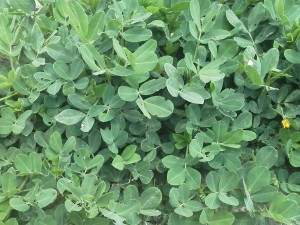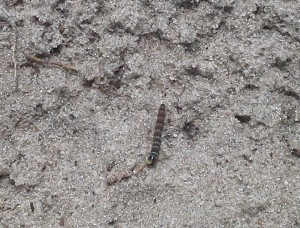My weekend started with a BOLO: Be On the Look Out sent by my predecessor, retired County Agent Bill Thomas. He reported finding a smorgasboard of caterpillars around his homestead. A mix of loopers, hornworms, and beet armyworm, and a few corn earworms. I set out into the area farm fields looking around to see if I could get a jumpstart on the phone calls.
I could find a few earworms, and we are also seeing some armyworms in sorghum fields, but my main concern, and I suspect that something we will be hearing more about very soon, was finding threshold levels of Granulate Cutworms (cutworm) in several fields. Our most recent experience with these was in 2011 if memory serves me correctly. That was the season when I heard reports of farmers making three sprays trying to control this pest. Of course it wasn’t until they made accurate identification and selected the appropriate chemical that they achieved control.
My experiences with cutworm echoed those described by Dr. Richard Sprenkel which can be found here: Identification and Monitoring of Insect Pests in Peanut.
“There are several species of cutworms that are capable of causing damage to peanut. However, one of the most common species is the granulate cutworm, Agrotis subterranea. Larvae of the granulate cutworm are smooth, plump worms that vary from gray to light brown. When disturbed, the larvae curl into a tight C-shape. Fully grown larvae are up to 1 1/2 inches in length.
Although cutworm damage in a field may be conspicuous, the cutworms themselves may not be readily evident. This is because the cutworm feeds mainly at night and on cloudy days. During the day, cutworms may be found on or just beneath the soil surface or under trash.
Cutworms cause several types of damage to peanut. Early in the season, they can cause serious damage by feeding on the stems of young plants near the soil surface causing the plants to fall over. Later in the season, cutworms can climb the plants and feed on foliage. Cutworms have the distinction of consuming more foliage per larva than any of the other foliage-feeding worms on peanut. However, high numbers of cutworms per foot of row do not always result in extensive foliage loss. This is because cutworms frequently feed on organic residue on the soil surface leaving the foliage relatively untouched.”

Early feeding of cutworms on peanut leaves on June 15, 2013. This was the isolated incidence I observed of significant feeding even with cutworm populations as high as 5 per foot in other fields on this date.
The University of Florida recommendation is loss of 20% of the peanut canopy. Although these caterpillars are easier to find at night , I feel comfortable scouting during the day, and will raise a red flag when finding 3-5 per foot of row. If you can find feeding, but not find the caterpillars you might come back after dark and search with a flashlight. I could find 3-5 cutworms per foot in some fields and none in others this weekend, so these are definitely an insect where scouting pays compared to blanket applications. In those fields, I only found one with significant levels of canopy feeding. But, I was obviously on the front end of the cycle finding primarily small caterpillars. My experience in 2011 was I could find up to 10 caterpillars per foot of row, but almost a week went by before they begin to consume the peanut canopy to a measurable extent. Most farmers will go ahead and treat when they find the high populations instead of scouting at frequent intervals to assess canopy damage. One thing we saw in 2011 was consistent with Dr. Sprenkel’s comment that they can consume a lot of foliage rapidly when the time comes that they move away into the peanut canopy.

Typical “C” position of a cutworm. This is a late instar specimen. They are shaped like a “Greyhound” bus when walking
The UGA Peanut Insect Control Guide shows pyrethroids, plus Lannate, Steward, and Belt for control. However, the reports I heard in 2011 was spraying multiple times because of lack of control by pyrethroids. My experience was that we had excellent control with Belt at 2 oz per acre. We haven’t made any treatments yet for this cycle of caterpillars.
On a related note, it is about the time of year peanut growers start getting excited about the Lesser Corn Stalk Borer (LCSB). This is a pest that summer rainfall patterns usually solve without our involvement. The IFAS recommendation is control when larvae are found with 15% of the plants at pegging. So for 6 plants per foot, that is roughly one larvae per foot. I found LCSB in every field I looked at. However, I was not concerned about the populations I found in any field. I suppose we are getting enough rain that the natural fungus and mechanical action of rainfall are keeping population in check as we see most years.



